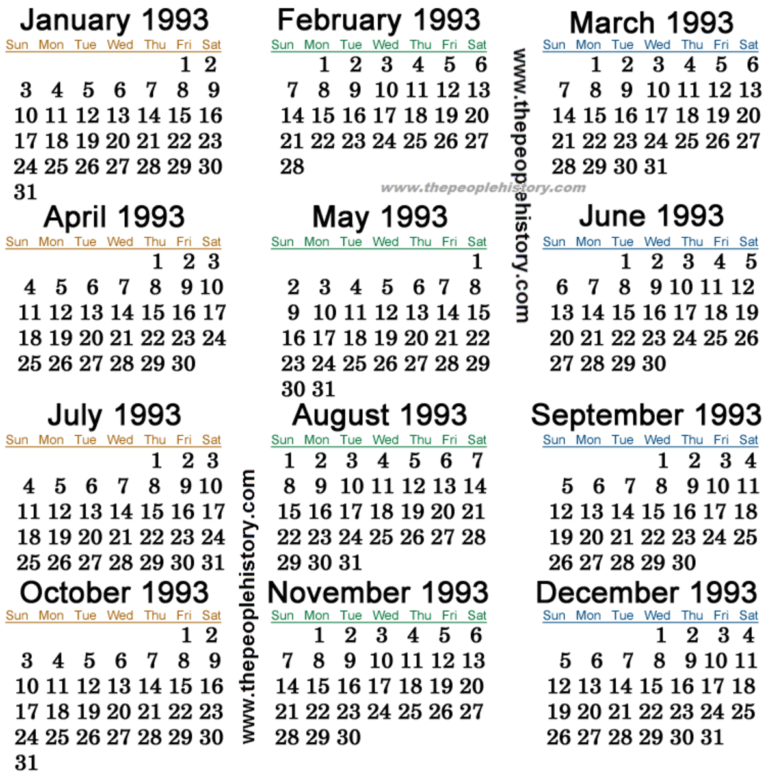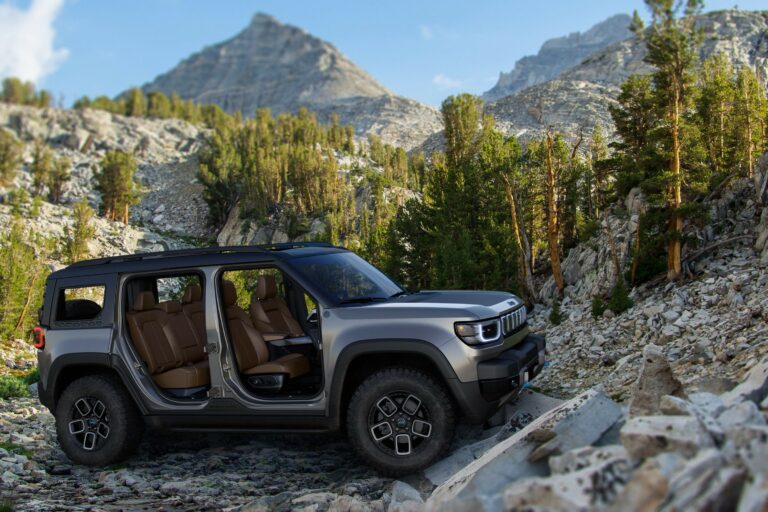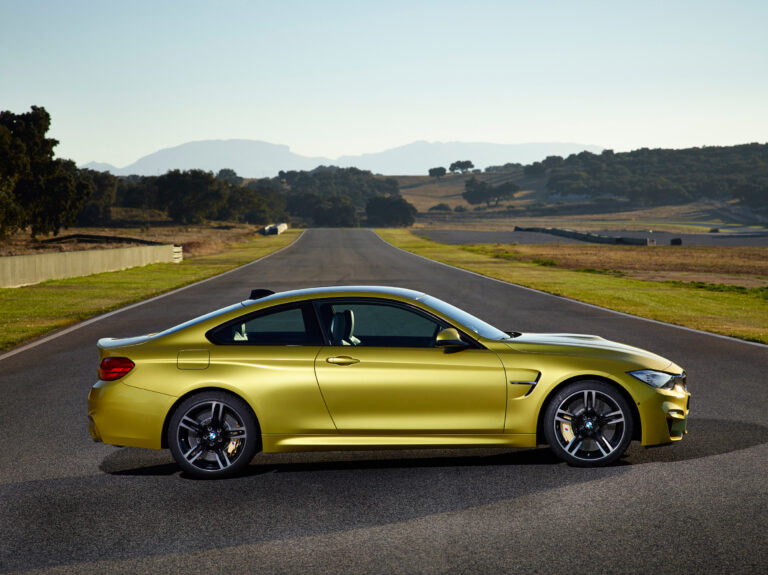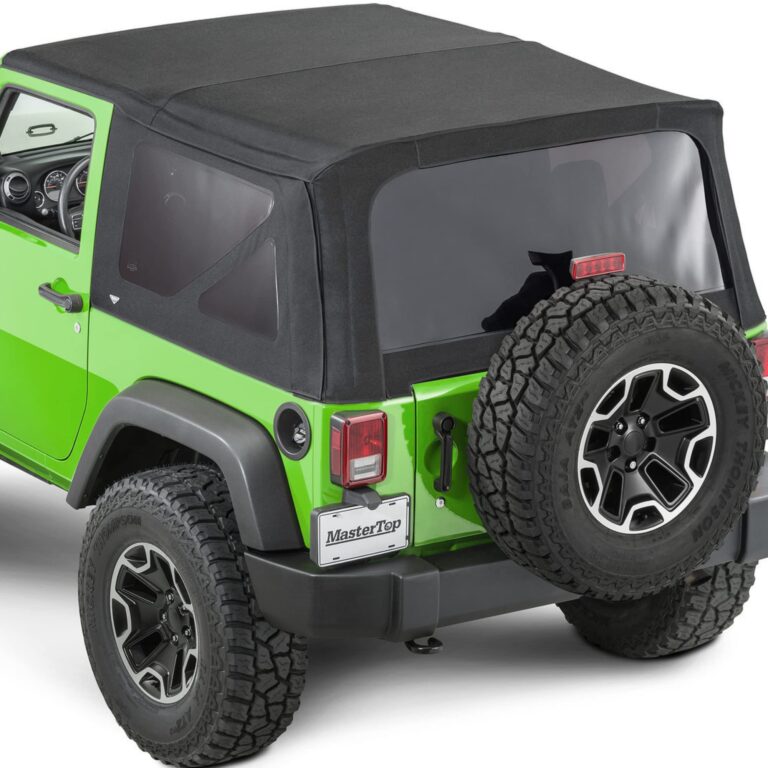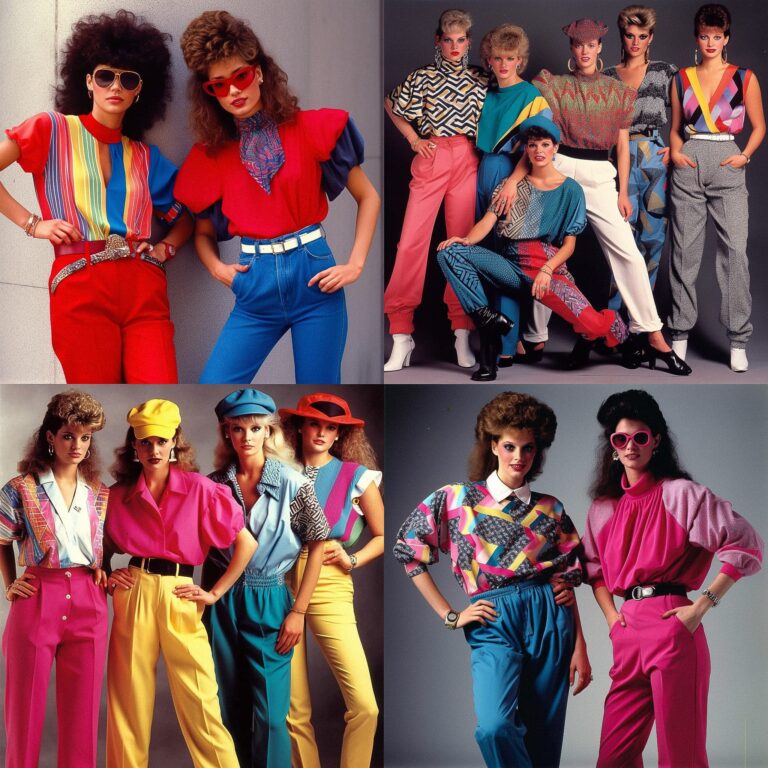1951 Jeep Willys For Sale: Embarking on a Journey into Automotive History
1951 Jeep Willys For Sale: Embarking on a Journey into Automotive History jeeps.truckstrend.com
The year 1951 holds a special place in the annals of automotive history, particularly for enthusiasts of rugged, no-nonsense utility vehicles. It marks a significant point in the production of the Willys-Overland CJ-3A, a vehicle that not only continued the legendary legacy of its military forebears but also firmly cemented the Jeep’s place in civilian life. For sale today, a 1951 Jeep Willys isn’t just a used car; it’s a tangible piece of post-war Americana, a symbol of freedom, durability, and ingenuity that continues to captivate collectors, adventurers, and those seeking a truly unique driving experience.
This comprehensive guide aims to navigate the landscape of acquiring a 1951 Jeep Willys. From understanding its historical significance and what makes it a desirable classic to practical advice on what to look for, where to find one, and what to expect in terms of ownership, we’ll equip you with the knowledge to make an informed decision about bringing this iconic machine home.
1951 Jeep Willys For Sale: Embarking on a Journey into Automotive History
The Enduring Appeal of the 1951 Jeep Willys
The Willys CJ-3A, produced from 1949 to 1953, was the direct successor to the CJ-2A, the first civilian Jeep. While it retained much of the CJ-2A’s DNA, the CJ-3A introduced several refinements, including a one-piece windshield that could be folded flat, an updated dashboard, and improved seating comfort. The 1951 model, therefore, represents a mature iteration of this beloved "Universal Jeep," embodying the perfect blend of utilitarian simplicity and burgeoning civilian comfort.
Key Features and Heritage:
- Military Lineage: The CJ-3A inherited its robust "Go-Devil" L-head 4-cylinder engine, T-90 3-speed manual transmission, and sturdy 4×4 drivetrain directly from its battle-tested MB and Ford GPW military predecessors. This heritage ensures exceptional durability and off-road capability.
- Iconic Design: The flat-fender body, exposed hinges, simple grille, and open-top design are instantly recognizable and evoke a sense of adventure and nostalgia.
- Utilitarian Versatility: Originally marketed for farming, light industry, and recreational use, the CJ-3A was designed to be a workhorse. Its compact size, high ground clearance, and four-wheel drive made it invaluable in diverse terrains.
- Raw Driving Experience: Owning a 1951 Willys means engaging with the road in a way modern vehicles simply don’t allow. With no power steering, no power brakes, and minimal sound insulation, every bump, turn, and engine rumble is felt, connecting the driver directly to the machine and the environment.

The benefits of owning a 1951 Jeep Willys extend beyond its practical capabilities. It offers a unique opportunity to join a passionate community of owners, participate in classic car shows, or simply enjoy the thrill of driving a vehicle that turns heads and sparks conversations wherever it goes. For many, it’s an investment in a piece of living history, with the potential for appreciation if properly maintained.
What to Look For When Buying a 1951 Jeep Willys
Purchasing a vintage vehicle like a 1951 Willys requires a keen eye and a strategic approach. Unlike modern cars, condition can vary wildly, and what you see isn’t always what you get.
Critical Inspection Points:

-
Rust: This is the primary enemy of any vintage vehicle.
- Frame: Inspect the frame rails thoroughly for cracks, bends, or significant corrosion, especially near suspension mounts and crossmembers.
- Body Tub: Check the floor pans, wheel wells, and especially the hat channels (the structural supports underneath the tub) for rust-through.
- Fenders and Grille: While often replaced, look for signs of bondo or poor repairs.
- Underneath: Pay attention to spring hangers, shackle mounts, and brake lines.
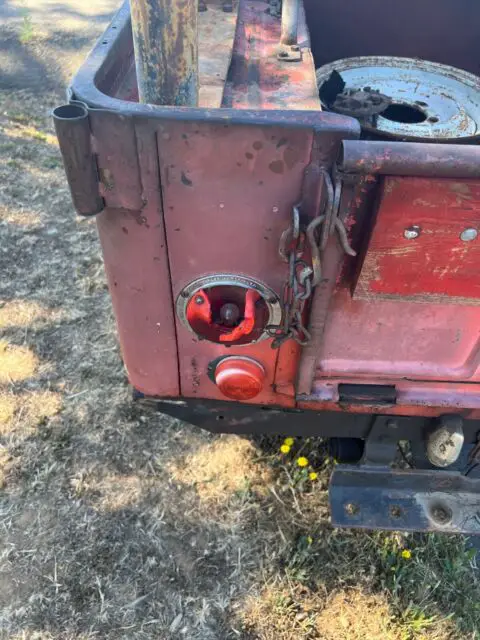
-
Engine (Go-Devil L-Head 4-Cylinder):
- Originality: Is it the original "Go-Devil" (L-134) engine? Matching numbers (or at least the correct type) add value.
- Condition: Look for leaks (oil, coolant), excessive smoke from the exhaust (blue for oil, white for coolant), and listen for knocks, ticks, or unusual noises. A compression test is highly recommended.
- Modifications: Some owners upgrade to 12-volt electrical systems, which is common and often desirable for reliability. Be wary of non-Willys engine swaps unless you specifically want a restomod.
-
Drivetrain (Transmission, Transfer Case, Axles):
- Transmission (T-90): Test all gears, listen for grinding, and check for ease of shifting.
- Transfer Case (Dana 18): Engage 4-high and 4-low. Listen for clunking or grinding. Check for leaks.
- Axles (Dana 25 front, Dana 41 or 44 rear): Check for leaks around the differential covers and wheel ends. Listen for howling noises during a test drive.
-
Brakes and Steering:
- Brakes: The 1951 Willys has drum brakes all around. Ensure they are functional, provide firm pedal feel, and don’t pull to one side. Look for leaks in the master cylinder or wheel cylinders.
- Steering: Check for excessive play in the steering wheel. This could indicate worn steering box components, tie rod ends, or kingpins.
-
Electrical System: Original systems are 6-volt. Ensure lights, gauges, and horn work. If converted to 12-volt, ensure it was done professionally.
-
Documentation: A clear title is essential. Service records, original owner’s manuals, or historical photos can add significant value and provide insight into the vehicle’s past.
Originality vs. Restomod vs. Project: Decide your preference upfront.
- Original/Preserved: Highest value for collectors, but might require more delicate maintenance.
- Restored: A professional restoration can bring it to "like-new" condition, but verify the quality of the restoration.
- Restomod: Modern engine, transmission, brakes, or suspension. Offers modern comfort but sacrifices originality. Valued differently.
- Project: Cheapest upfront, but prepare for significant time, effort, and financial investment.
Navigating the Market: Where to Find a 1951 Jeep Willys For Sale
Finding the right 1951 Willys can be an adventure in itself. Patience and persistence are key.
- Online Auction Sites: Platforms like Bring a Trailer (for higher-end, well-documented vehicles), eBay Motors (wide range, from projects to drivers), and Hemmings (classic car marketplace) are excellent starting points.
- Specialty Classic Car Dealers: Dealers who specialize in vintage 4x4s or military vehicles often have Willys Jeeps in their inventory. They typically offer more vetted vehicles, but at a premium.
- Dedicated Forums and Classifieds: Websites like CJ-3A.com, WillysTech, and G503 (military vehicle forum) often have "for sale" sections where enthusiasts buy and sell.
- Classic Car Shows and Swap Meets: Attending local and regional events can unearth hidden gems and allow for in-person inspections.
- Social Media Groups: Facebook groups dedicated to Willys Jeeps or classic 4x4s can be a surprisingly good source.
- Word of Mouth: Let friends, family, and local mechanics know you’re looking.
Tips for Searching:
- Be specific in your search terms (e.g., "1951 Willys CJ-3A," "flat fender Jeep").
- Set up email alerts on marketplaces.
- Don’t be afraid to travel for the right vehicle, or arrange for a pre-purchase inspection (PPI) by a local specialist.
Understanding Valuation and Pricing
The price of a 1951 Jeep Willys varies significantly based on its condition, originality, and the current market.
| Condition | Description | Estimated Price Range (USD) | Key Features/Notes |
|---|---|---|---|
| Concours/Show Quality | Flawless, professionally restored to original factory specifications or better. Every detail is correct, often with documentation of the restoration. Suitable for museum display or high-level competitions. | $30,000 – $60,000+ | Extremely rare at this level. Matching numbers engine, perfect paint, chassis, and interior. No discernible flaws. |
| Excellent | Very well-maintained and highly original, or a high-quality older restoration that has been meticulously cared for. Minor imperfections may exist but are not immediately noticeable. Fully functional and reliable. | $20,000 – $35,000 | Ready to drive and enjoy. All systems (engine, transmission, brakes, electrical) are in top working order. Minimal rust. |
| Good | Runs and drives reliably, mostly complete, and presentable as a driver. May have some visible flaws like paint chips, minor surface rust, worn seats, or non-original components. Needs some attention but is usable. | $12,000 – $25,000 | A great candidate for a rolling restoration or regular use. Minor mechanical work might be needed (e.g., brake service, fluid changes, tune-up). |
| Fair | Drivable but requires significant mechanical or cosmetic work to be considered reliable or attractive. Visible rust (though not structural), non-functional gauges, worn suspension, or an engine that needs attention. | $7,000 – $15,000 | Best suited for someone with mechanical skills or a budget for a comprehensive restoration. Likely needs bodywork, paint, and major mechanical overhaul. |
| Poor/Project | Non-running, heavily rusted, incomplete, or severely damaged. Often sold for parts or as a complete frame-off restoration candidate. Likely missing key components or has significant structural issues. | $3,000 – $8,000 | Requires a full, ground-up restoration. Expect to replace or rebuild most components. Ideal for experienced restorers looking for a challenge. |
| Factors Influencing Price | Originality: Matching numbers engine and drivetrain components significantly increase value. Modifications: Tasteful period-correct upgrades (e.g., 12V conversion) may enhance value, while drastic modern swaps can detract. | Documentation: Clear title, service records, and historical provenance add value. Location: Market demand can vary by region. Rarity: Specific options or limited production variants can command higher prices. |
Negotiation Tips:
- Always be prepared to walk away.
- Highlight any issues you find during inspection.
- Reference recent sold listings for similar vehicles, not just asking prices.
- Factor in transportation costs and any immediate repairs needed.
Ownership and Maintenance Considerations
Owning a 1951 Willys is a rewarding experience, but it comes with its own set of responsibilities.
- Parts Availability: Fortunately, the Willys community is strong, and many parts are still available, either as new old stock (NOS), reproduction parts, or used components. Mechanical parts are generally easier to source than specific body panels.
- Maintenance: These vehicles are mechanically simple. A basic understanding of automotive mechanics and a good service manual (like the original Willys manual) will go a long way. Regular lubrication, fluid changes, and inspection of brakes and steering components are crucial.
- Common Upgrades: Many owners opt for a 12-volt electrical conversion (for brighter lights and easier starting), electronic ignition, or minor brake improvements. More significant upgrades like power steering or disc brakes are possible but alter the original driving feel.
- Insurance: Obtain classic car insurance, which typically offers agreed-value coverage and lower premiums than standard auto insurance, given the limited mileage.
- Driving Experience: Be prepared for a slow, noisy, and somewhat challenging drive compared to modern vehicles. There’s no air conditioning, no power aids, and cruising speeds are typically 45-55 mph. However, this raw experience is precisely what many owners cherish.
Conclusion
The 1951 Jeep Willys CJ-3A is more than just an old vehicle; it’s a living legend, a testament to American engineering, and a portal to a bygone era. Whether you’re a seasoned collector, an off-road enthusiast, or simply someone yearning for a unique connection to automotive history, finding a 1951 Jeep Willys for sale offers an unparalleled opportunity.
Embarking on this journey requires patience, research, and a willingness to embrace the quirks and charms of a truly vintage machine. But for those who do, the rewards are immeasurable: the thrill of open-air driving, the camaraderie of the Willys community, and the satisfaction of owning a piece of history that continues to inspire and endure. It’s not just a purchase; it’s an adoption of a legacy.
Frequently Asked Questions (FAQ)
Q1: Is a 1951 Willys Jeep suitable for daily driving?
A1: While technically possible, a 1951 Willys is generally not recommended for daily driving in modern traffic. It lacks modern safety features, power assists (steering, brakes), and comfort amenities. Its top speed is limited, and the ride is rough. It’s best suited for recreational use, local errands, or as a classic show vehicle.
Q2: Are parts for the 1951 Willys still available?
A2: Yes, surprisingly so! Due to the Willys’ robust design and long production run, many mechanical parts are readily available from specialist suppliers and reproduction companies. Body panels and specific trim pieces can be harder to find but are often reproduced. The active Willys community is also a great resource for used parts and advice.
Q3: What kind of fuel economy can I expect?
A3: The "Go-Devil" L-head 4-cylinder engine is not known for its fuel efficiency by modern standards. Expect anywhere from 12-18 miles per gallon, depending on driving conditions, vehicle tune, and terrain.
Q4: Can I take a 1951 Willys off-roading?
A4: Absolutely! The Willys was designed for rugged terrain. Its lightweight, short wheelbase, high ground clearance, and robust 4×4 system make it incredibly capable off-road, even by today’s standards. However, be mindful of the vehicle’s age and components, and avoid extreme conditions that could cause damage.
Q5: What’s the main difference between a CJ-2A and a CJ-3A (like the 1951 model)?
A5: The CJ-3A (1949-1953) introduced a one-piece windshield (which could still fold flat) instead of the CJ-2A’s two-piece split windshield. It also had an updated dashboard, improved seating, and minor mechanical refinements. The 1951 CJ-3A is essentially an evolved, more refined version of its immediate predecessor.
Q6: Is a 1951 Willys a good investment?
A6: For the right vehicle, yes. Well-maintained, original, or professionally restored 1951 Willys Jeeps have shown steady appreciation in value over time, especially those in excellent or concours condition. Like any classic car, its value is tied to condition, rarity, and market demand. It’s also an investment in enjoyment and a unique hobby.


